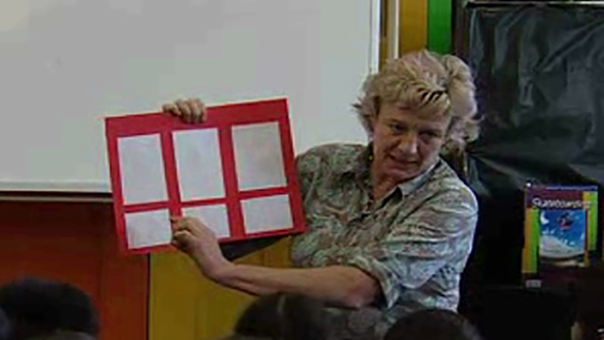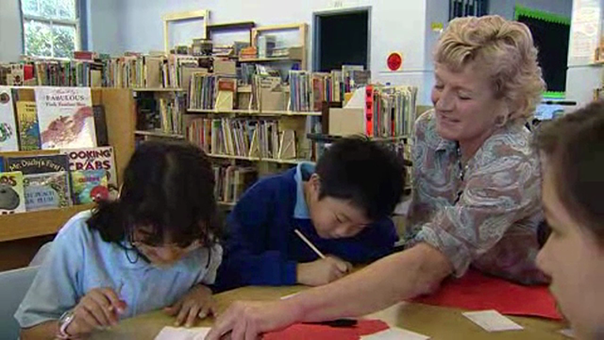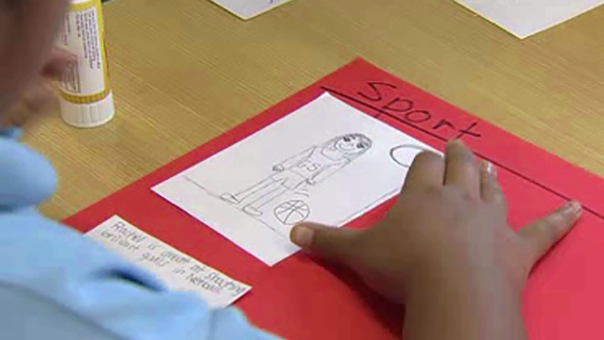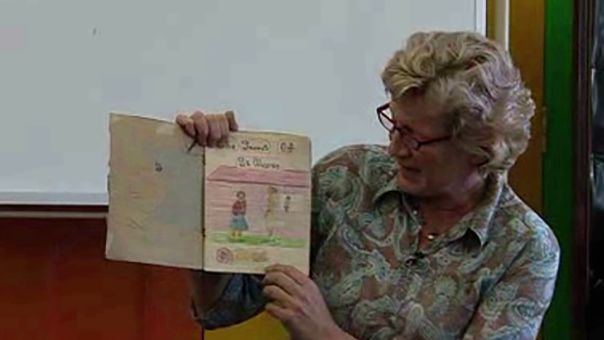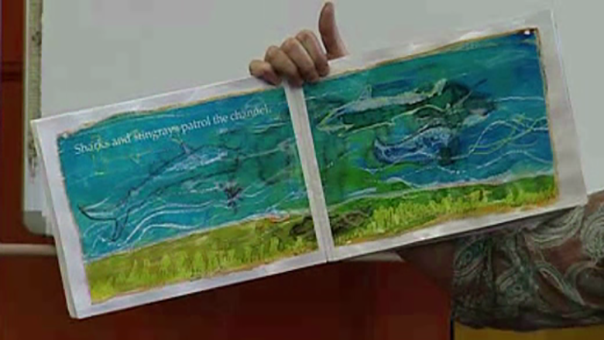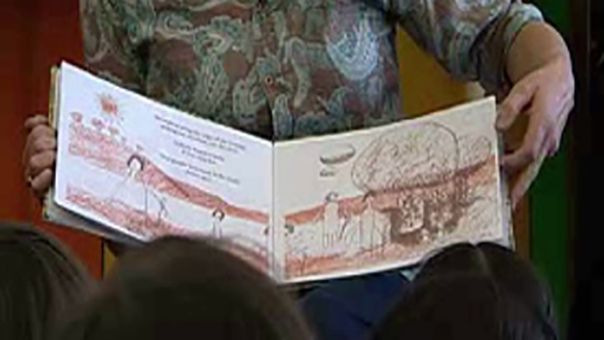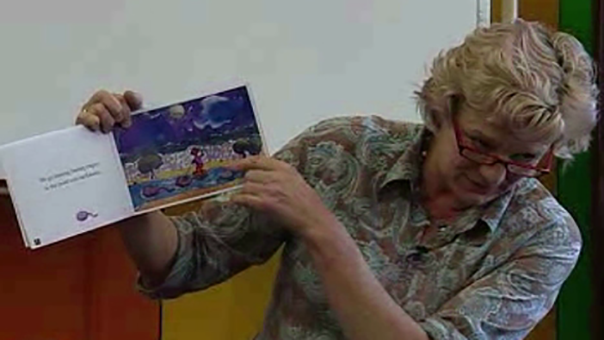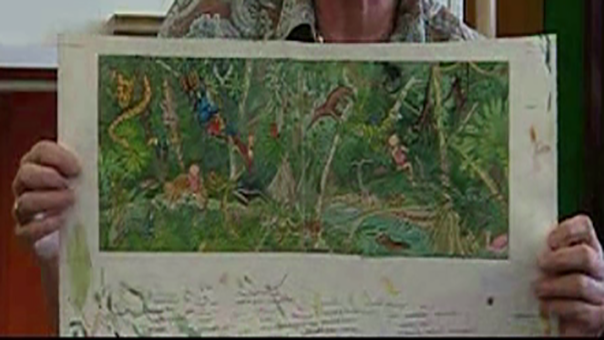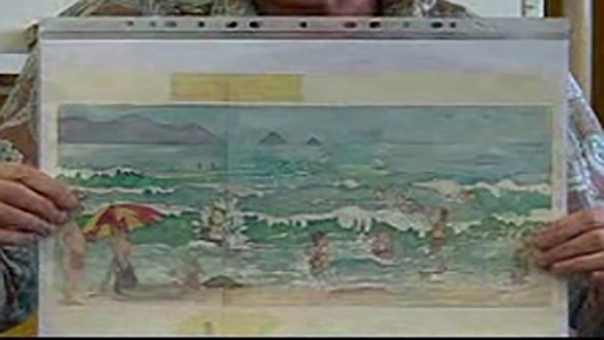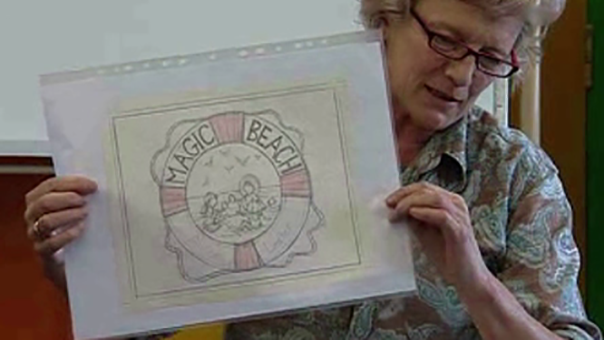1. Creating a class book - Introduction

Viewing guide
This twelve video resource guides students to create, first a collaborative whole class book and second, an individual book using digital technologies. In each video Alison Lester discusses her creative processes and the books she has written. Alison’s books are aimed at Stage 1 students but this resource is designed to be used with Stage 3. Individual videos can be used to teach specific aspects of creative writing or illustrating. The ‘Before’ and ‘After’ tabs contain relevant activities. The activities focus on the NSW English syllabus outcomes with scope to cover NSW Creative Arts outcomes. Information on relevant outcomes is in the ‘Teaching notes’ below.
Teacher to:
-
explain that this is the first lesson in a sequence where students will be creating books, first as a whole class and then on their own
-
lead a discussion about the importance of writing your own texts.
Students to:
-
discuss why people write texts and the purpose of those texts
-
draw and/or write about a book they would like to write, in their journal.
Students to:
-
write down the key points that Alison makes in the video regarding her creative process
-
share their list with a partner or small group, add any ideas from other students and then order them in terms of importance
-
as class discuss what they think is the key point about writing books to take away from this video
-
write a journal entry discussing how the key point identified by their class changes or influences the idea they had at the beginning of the lesson.
This lesson will guide students to start thinking about how and why books are written and made. You could use the in the first part of the ‘After’ activity.
As students work through the lesson sequences in this resource they should use an art journal or scrap book to document their design process and journey.
Scheduling this teaching sequence
This unit of work is designed to be taught in 1 hour sessions, once a day for a term. The length of time needed for each activity will depend on the age and ability level of the class.
Target audience
Although this resource is aimed at Stage 3 students, with appropriate adjustments it would also to suitable for use with Stage 2 or 4 students.
Learning intention
Completing this activity affords students the opportunity to:
-
discuss how language is used to achieve a widening range of purposes for a widening range of audiences and contexts (EN3-5B)
-
think imaginatively, creatively, interpretively and critically about information and ideas and identifies connections between texts when responding to and composing texts (EN3-7C)
-
identify and consider how different viewpoints of their world, including aspects of culture, are represented in texts (EN3-8D).
Alison Lester: These are the 'Clive eats alligator' books I call them. And this was the first book, 'Clive Eats Alligators, Rosie Sips Spiders'. So this was the dummy and this one's the finished one and can see how similar they are. It's really good for you to see these rough drawings and realise that I don't draw very carefully. For my first draft of drawing, I let myself make lots of mistakes and I try to get a lot of energy into my drawing instead of just being sort of stiff and careful. And you can always photocopy or trace to translate it onto better paper but keep that in mind when you're working that, the more energy you put into that first drawing, the better it will look. There's a picture of Rosie sipping spiders and here's the picture that it turned into. Do you know what spider's are? Do you ever have them?
Child: It's like lemonade and ice cream in it.
Alison: Yeah, they're yummy. Especially the lime ones. Here's another one called 'Tessa Snaps Snakes' which is about the same one. And here's ... often I have to make big lists like this one, where I'm planning what I'm going to do. I'm a great maker of lists. Yeah, you would have had these ones before, I think. Here's ... those pencil drawings have been traced and I've drawn over them in pen and then coloured them with watercolour. Here was one that I didn't like that I covered up and, of course, I wouldn't do that anymore because everything gets designed on the computer so it's really easy just to change something within the design program. But Clive eats ... I mean 'Ernie Dances to the Didgeridoo' was a book that I did with a group of kids in Arnhem Land. And they'd actually made a book the way you're going to make a book now and it was such a lovely book. It was called 'We Love Gunbalanya', which is the place they live, so I decided to do the next book in the series based up there. So it talks about Ernie going up to Arnhem Land for a year and arriving at his new house and then, up there there is six seasons, so for each season the kids write back, or Ernie writes back to the kids down south, describing his life up there with the indigenous kids. So it says, 'Dear Clive, it's Kudjewk now, the monsoon season. It rains every day but I'm having a good time. Sammi surfs in the puddles. Christine slides in the mud. Ernie catches frogs. Joseph plays football. Patrick spears a barramundi. And Jenna rides her bike in the rain. But Tammy and her baby brother watch a goanna floating in the floodwaters.' Because it rains like crazy up there. 'Dear Frank, it's Bangkerreng, harvest time, It has stopped raining and the sun shines every day. Christine plays tin-tin. Sammi jumps into the waterfall. Ernie sneaks up on the buffalo. Patrick collects goose eggs. Joseph does backflips off the coconut tree. And Tammy gets chased by a crocodile. But Jenna goes for a walk and her grandfather's pig goes too.' Now, just before we start making our books I'll show you another nice ... This one, 'When Frank Was Four', follows the kids through from when they're one until when they're seven, which is another way of doing it.
All English and Creative Arts syllabus outcomes referred to in this resource are copyright Board of Studies, Teaching and Educational Standards NSW 2017.

